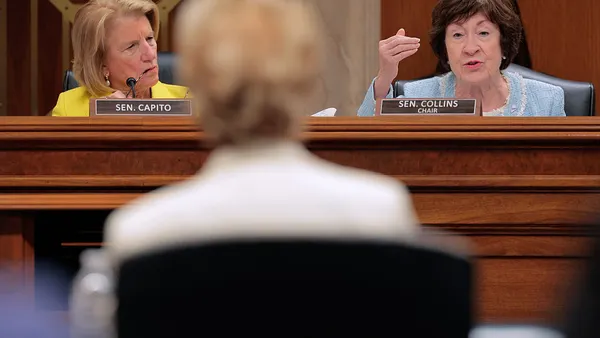Dive Brief:
- Teachers reported significantly more anxiety than even healthcare workers — not to mention office and other workers — during the pandemic, according to a report published Tuesday by the American Educational Research Association.
- Teachers were also slightly more likely to report depression and feelings of isolation compared to healthcare workers, according to the survey of 3 million employed people — including 130,000 teachers — conducted from Sept 8, 2020, through March 28, 2021. The effect was stronger for teachers leading remote classes, who were significantly more likely to report depression and isolation compared to in-person teachers.
- According to the report's authors, this study is the first to empirically assess teacher mental health during the pandemic using such a large national dataset. The findings point to the need to include teachers in decision-making processes, as well as to provide more mental health support for educators, the report said.
Dive Insight:
The study did not examine reasons for teachers' high anxiety levels. However, co-author Joseph Kush, an assistant psychology professor at James Madison University, said one theory is that healthcare workers are more experienced in working under extreme conditions. There also was much uncertainty week-to-week for educators as schools adjusted reopening policies during the pandemic, Kush said.
The high rate of teachers' anxiety compared to healthcare workers surprised the researchers. "We went back to make sure we were crunching the numbers correctly," Kush said.
In fact, the findings from the AERA study align with earlier and separate research from the RAND Corp. and MissionSquare Research Institute, both of which have issued reports about the mental and emotional toll the pandemic has taken on educators.
In the AERA study, findings were based on the COVID-19 Trends and Impact Survey developed by Carnegie Mellon University's Delphi Group and Facebook. Survey participants were asked to rate whether they had symptoms of anxiety, depression and isolation during the previous seven days.
AERA's analysis shows teachers' reported anxiety was 40% higher than healthcare workers, 20% more than office workers and 30% above workers in other fields. Female teachers were 70% more likely to feel anxiety than male teachers, the survey found.
Kush said the findings are a "snapshot" in time and can be generalized to teachers across the country due to the substantial survey size. There were some data limitations, though. For example, survey respondents were not asked about their race or ethnicity, Kush said.
There is also no known comparable dataset for pre-pandemic mental health outcomes to yield better understanding of the anxiety levels for teachers and other workers before the health crisis.
The report's findings demonstrate the need to support educators' mental wellness, as well as the necessity of including teachers in decision-making processes, Kush said.
"It's kind of that downstream effect," he said. "Teachers are not going to be able to effectively teach if they themselves are not well, and so we kind of almost need to start there."








 Dive Awards
Dive Awards





